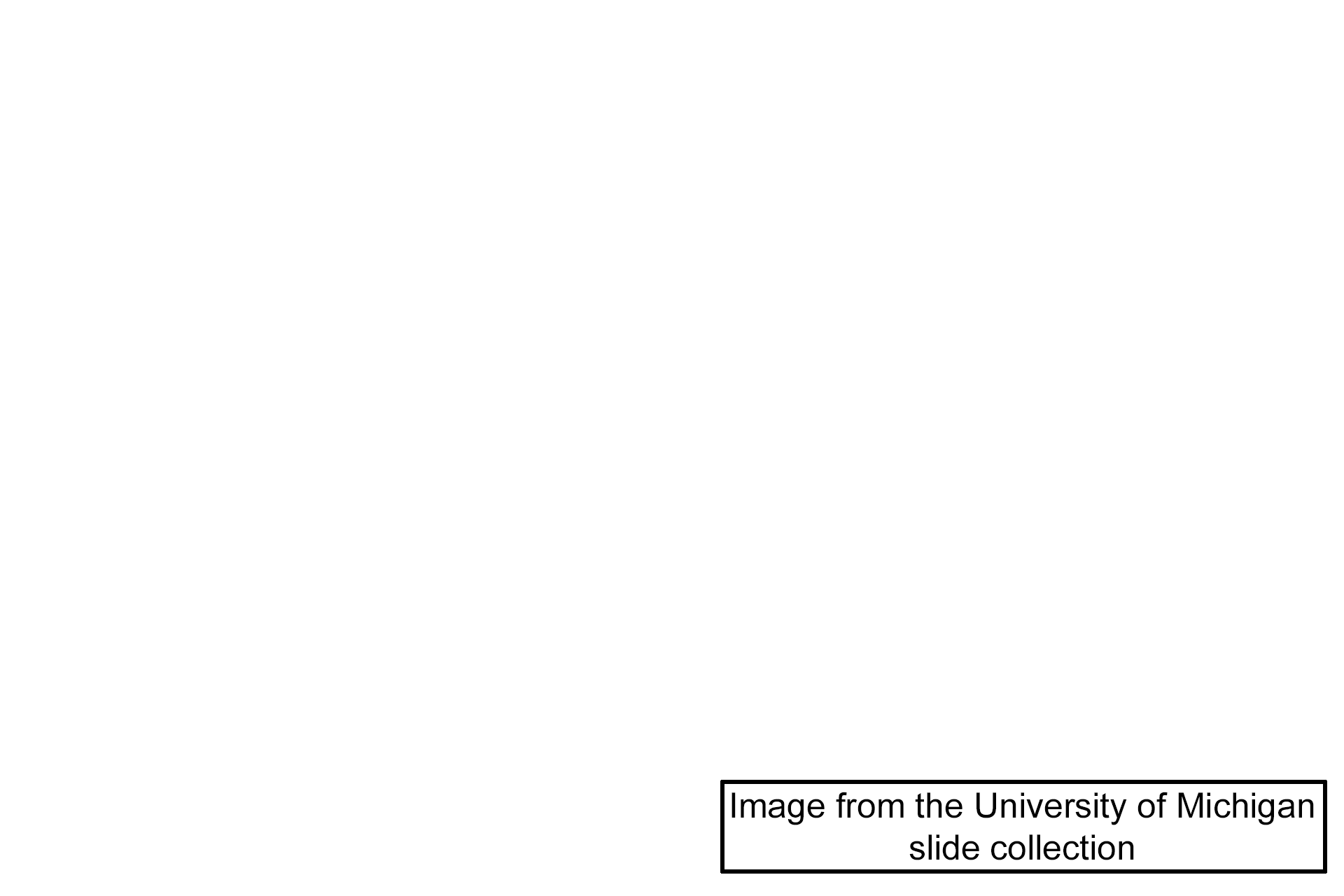
Bone matrix: remodeling
These images compare, immature (woven) bone (left) with more mature, adult (lamellar) bone (right). Woven bone is the first bone deposited during development, adult bone remodeling and repair following a fracture. In each case, woven bone is remodeled and replaced by lamellar bone. Woven bone (l), lamellar bone (r), 300x, 300x

Woven, immature bone >
Woven bone is usually present only temporarily and is replaced by lamellar bone through the process of remodeling. Woven bone is characterized as having a large number of osteocytes that appear randomly arranged. Additionally, woven bone has a more basophilic matrix due to its lower content of collagen fibers and mineralization compared with lamellar (adult) bone. Both of these features contribute to the lower strength of woven bone.

Lamellar, mature bone >
Mature bone is organized in lamellae with orderly arranged lacunae located between the lamellae. Lamellar bone can be arranged as cylindrical structures, seen here, called Haversian systems (osteons) or as flattened plates on the surface of bone (inner and outer circumferential lamellae). Mature bone is highly eosinophilic due to the large number of collagen fibers in the matrix.

- Haversian systems
Mature bone is organized in lamellae with orderly arranged lacunae located between the lamellae. Lamellar bone can be arranged as cylindrical structures, seen here, called Haversian systems (osteons) or as flattened plates on the surface of bone (inner and outer circumferential lamellae). Mature bone is highly eosinophilic due to the large number of collagen fibers in the matrix.

Osteocytes >
Woven (immature) bone contains a greater number of osteocytes compared with lamellar (mature) bone and the cells are more rounded in their lacunae. Additionally, the matrix of woven both is less eosinophilic due to the lower content of collagen fibers.

Image source >
Image from the University of Michigan slide collection.